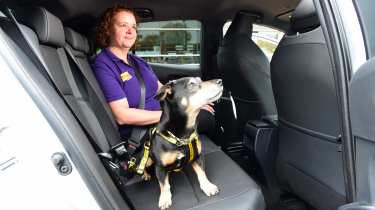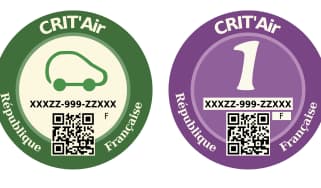Take your dog to France: pet passports and tips when travelling to Europe by car
Want to take your dog to France? Join the increasing number of pet owners doing just that
It’s well known that pet ownership surged during the pandemic, and the new breed of dog owner seems much less inclined to disappear on holiday without their four-legged companion in tow. As a result, cross channel carriers from ferry companies to the channel tunnel report a surge in demand for pet services. Channel tunnel operator LeShuttle claims that as many as one in eight of the cars on its trains traversing the channel now have a pet on board - it even has a marketing slogan “no furry friend left behind”.
If you’re thinking of taking your dog to France by car on a pet passport, this guide has all the info and tips you’ll need.
What are the options for travelling to France with your dog?
LeShuttle has always been a favourite for pet owners, due to the fact that you stay in your car - along with your pet - for the duration of the 35 minute crossing. More than four million pets have travelled that way since 2000, and with fares from just £22 each way, dedicated exercise areas and a ‘pet reception’ at terminals, it’s understandably popular.
However the ferry companies are in on the pet travel boom too, with operators providing ‘pet lounges’ on their boats. P&O currently charges £15 per pet each way to travel on the Dover to Calais route, and while dogs used to have to make the crossing alone in their cars on the vehicle deck, you can now upgrade to the onboard Pet Lounge from just £12 each way. “It is a luxurious lounge, and the large booths have plenty of space underneath for the pets’ own beds and there are comfy leather sofas and chairs for their human companions,” the company says.
Brittany Ferries, which operates on longer routes than Dover-Calais, also offers pet-friendly cabins for dogs and owners sleeping on board, as well as the more basic options of onboard kennels or dogs travelling in their vehicles. The company typically carries around 100,000 dogs and cats each year, but says demand has risen hugely for its pet-friendly services and has just added more cabin capacity on its Plymouth/Roscoff route to try and meet demand.
Rules for taking your dog abroad
While the cross-channel companies make it easy and affordable to take Fido to France or elsewhere in the EU, you definitely need to be on top of the paperwork and medical requirements. Turn up at your port without your dog’s documentation in order (the same goes for any pet), and you’ll be turned away and not allowed to travel.
There’s plenty of online information on the gov.uk website about how to get your pet prepped for travel, but it boils down to four basic requirements:
- Your pet must be microchipped
- Your pet must have a valid rabies vaccination
- Your pet must have an animal health certificate
- Your pet must have tapeworm treatment
Many owners will have their pets microchipped already, but a rabies vaccination is not common for dogs that haven’t travelled previously - make sure you book ahead with the vet, as it needs to have been administered 21 days before your animal health certificate can be issued. The certificate will also need to be issued and signed by your vet, as it contains a record of rabies jabs and any required boosters.
Tapeworm treatment must be given to your dog no less than 24hrs prior to, or 5 days after your arrival into the UK, and recorded on your animal health certificate. You can find out more on the gov.uk website - search “taking your pet dog, cat or ferret abroad”.
Click here for our list of the best cars for dog owners...
Find a car with the experts










